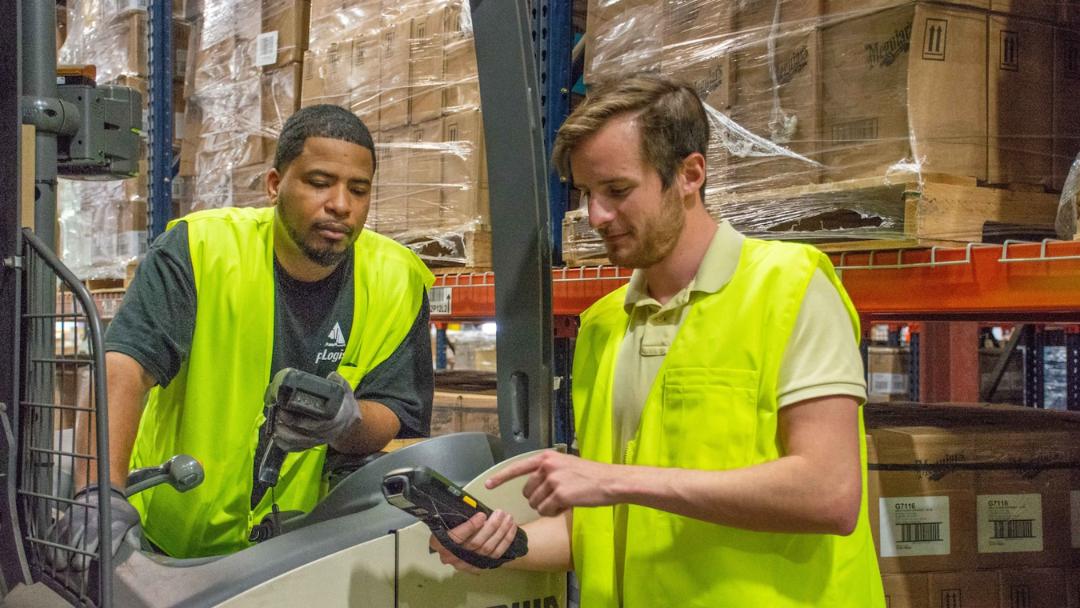Explore the power of strategic workforce planning process to help organizations stay agile, and drive business success in uncertain times.
Organizational success today hinges on a team’s ability to adapt, innovate, and stay ahead of the curve. Strategic workforce planning has emerged as a powerful tool for helping businesses remain agile and productive in the face of change.
By aligning an organization’s workforce with its long-term goals and challenges, a thorough strategic workforce plan promotes sustainable business growth, optimized talent utilization, and confidence in navigating unpredictable business landscapes. Read on for a closer look at how to implement a strategic workforce plan effectively and the benefits your organization receives as a result.
Implementing a Process for Strategic Workforce Planning
What is strategic workforce planning? Strategic workforce planning refers to the systematic process in which organizations assess their current workforce, identify future staffing needs, and develop strategies to ensure they have the right talent in place to meet long-term organizational goals. HR teams and business managers typically collaborate to create a thorough workforce plan that supports business growth.
The value of a comprehensive workforce plan
Amid economic uncertainty and continued labor shortages, a thorough workforce plan offers a host of valuable benefits to organizations, including:
- Enhanced efficiency: A well-structured workforce plan streamlines resource allocation and helps teams ensure they have the right talent available at the right time — minimizing hiring delays and boosting productivity.
- Future-proofing: In ever-evolving business landscapes, organizational agility is critical. With a comprehensive plan, companies are well-suited to proactively address future labor needs and adapt to changing market conditions. This supports long-term business sustainability.
- Reduced skill gaps: Research from Gitnux reveals that 87% of businesses worldwide already have a skills gap or will have one within a few years. A strategic workforce plan ensures teams effectively identify and address skills gaps within the workforce, so every team member is equipped to meet evolving job and industry requirements.
- Minimized costs: Optimizing workforce management is key to controlling labor costs and reducing turnover. This goes a long way toward supporting an organization’s bottom line.
6 steps for successful strategic workforce planning
Over the last few years, an increasing number of organizations have adopted strategic workforce planning processes to consider multi-year scenarios for future growth. Still, a report from Innovative Benefit Planning reveals that less than 50% of employers have a truly effective, strategic workforce plan in place.
Consider the following steps to craft an extensive strategic workforce plan:
1. Consider your long-term business goals
A strong workforce plan starts with a solid foundation. Take the time to ensure all organizational leaders and stakeholders are aligned on the company’s goals and future objectives, including the workforce changes that are necessary to achieve them.
Whether your long-term goals involve expanding into new markets, launching new products, or restructuring operations, this agreement should encompass more than just your HR department but also your finance, operations, line managers, and executive leadership teams.
2. Analyze your current workforce
With your business objectives in mind, it’s important to assess your current workforce. For a comprehensive view of your talent, examine the individuals you have in each specific role, each team member’s skills, strengths, and weaknesses, demographic trends, and turnover rates.
There are three main factors influencing workforce planning to consider:
- The strategic plan: Determine whether your current workforce is meeting your expectations and strategic business goals. From there, contemplate the next steps you should take to get to a point you’re pleased with.
- External factors: Evaluate the outside factors that will potentially impact your workforce plan, such as remote or hybrid working arrangements, diversity and inclusion initiatives, or emerging market competition.
- Workforce maintenance: Specify how you plan to strengthen your workforce, whether that means improved training and development opportunities, enhanced workplace culture, or initiatives to drive engagement.
3. Identify current and future skills gaps
Use the information you’ve gathered about your current workforce to inform your labor strategies moving forward. This helps you determine the training, recruitment, or internal development programs necessary to minimize future skills gaps.
You might consider whether a permanent or project-based role can help you reach talent with the right skills or invest in upskilling current staff to avoid looking for new hires with the right qualifications. Performing a skills gap analysis can also provide a comprehensive view of your entire workforce to help streamline your strategic workforce planning process.
4. Prepare for different scenarios and anticipate problems
The future is uncertain, but that doesn’t mean you have to move forward unprepared. Getting ready for unexpected scenarios and developing actionable steps for if or when they arise helps businesses secure a competitive edge by remaining agile in rapidly changing times.
It’s beneficial to consider situations involving:
- An economic downturn
- Rapid business growth
- Technological shifts or developments
- Talent shortages or layoffs
5. Consider external advice or support
Strategic workforce planning can quickly become a daunting task for your organization, but you don’t have to go at it alone. IFor best results, seek external support throughout the process.
Taking advantage of external help by working with an industry expert like Employbridge can bolster your organization with valuable insights and best practices. Partners also offer access to additional resources and perspectives that boost talent planning and results.
6. Implement, monitor, and adapt your plan
Finally, after establishing a comprehensive plan, it’s time for implementation. But the job doesn’t stop there. Remember that business environments are constantly changing, making it essential to consistently review the workforce plan in place, track your progress, and make necessary updates along the way.
As you create and implement a more thorough workforce plan, there are a few additional strategies worth considering to strengthen its effectiveness. Helpful tactics include:
- Choosing a range of appropriate decision-makers: Establishing a dynamic committee – including senior management, line management, and HR specialists – to create your organization’s strategic workforce plan fosters a holistic perspective, incorporates diverse insights, and improves decision making.
- Identifying emerging skills: Organizations can utilize current, historical, and predictive data to pinpoint evolving skills in the industry. Aligning your strategic workforce plan with future skill needs is an effective way to address talent shortages and skills gaps in advance.
- Leveraging labor market intelligence: Exhaustive data encompassing evolving industry roles, competitor talent dynamics, location specific trends, and diverse labor availability enables teams to proactively identify and reduce workforce risks.
- Building HR’s ability to use and interpret talent data: A 2022 global survey from Workday indicated that 49% of business leaders agree the inability to connect operational, people, and financial data to business outcomes hinders organization agility. Not to mention only 12% of those leaders say their organization’s data is fully accessible to those who need it. Empowering HR teams to effectively access and interpret talent data supports more informed decision making that boosts workforce planning outcomes.
Achieve workforce planning goals with help from a trusted partner
A strategic workforce plan is an indispensable tool for maintaining agility and resilience. As organizations start their strategic workforce planning, Employbridge is here to help along the way.
With over 30 years of experience, we blend the expertise of a national staffing leader with the adaptability of a cutting-edge workforce-as-a-service solution. Our deep industry knowledge and comprehensive management, measurement, and reporting services promote your long-term workforce goals. And, with the help of innovating technology, you can access higher-quality talent, increase placement rates, and speed up your time-to-fill moving forward.
Employbridge emerges as a true partner in helping you create a future-ready workforce that not only meets today’s demands but has the potential to thrive in continuously evolving environments.
Ready to boost your strategic workforce planning with help from a trusted partner?


